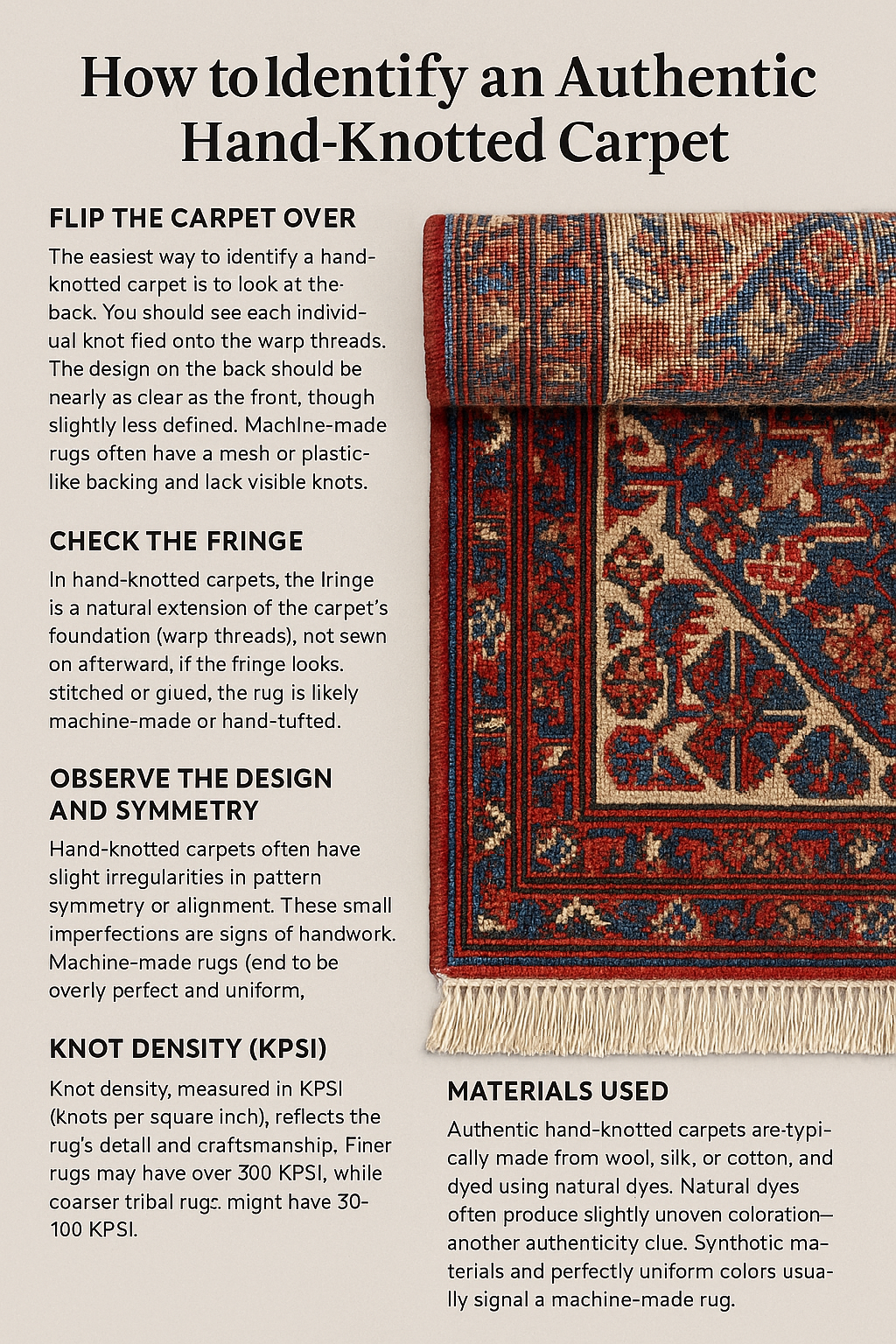
How to Identify an Authentic Hand-Knotted Carpet
Hand-knotted rugs are considered objects of artistry: fine craftsmanship, durability, and cultural value intertwine. These finest examples take months or even years to be completed, while machine-made or tufted rugs are factories-made. Here are a few tips to distinguish an authentic hand-knotted carpet from the fake ones:
Flip the Carpet Over
The most straightforward way to recognize a genuine hand-knotted carpet is by looking at its back. Every knot should be tied to the warp threads. While not as sharp as the front side, the design should be clearly visible. Most machine-made rugs have a mesh or plastic-like backing on which knots cannot be seen.
Analyze the Fringe
In hand-knotted carpets, the fringes are simply extensions of the carpet itself, formed by the warp threads. They are not sewn on afterward. If the fringe looks glued or stitched, the rug is either machine-made or hand-tufted.
Look for Pattern Irregularities and Misalignments
Hand-knotted carpets often display slight irregularities in pattern symmetry or alignment. These may be small imperfections that are the sign of handwork. On the contrary, machine-made rugs are too perfect and uniform.
Knot Density (KPSI)
Knot density, measured in KPSI (knots per square inch), deals with the amount of detail in the rug and its level of craftsmanship. Finest rugs like Persian silk carpets may have over 300 KPSI while coarser tribal rugs would have somewhere between 50 and 100 KPSI. A magnifying glass and ruler will help you in counting knots in 1 inch squared, which in turn will tell you about the quality.
Materials Used
True hand-knotted carpets normally contain wool, silk, or cotton and use natural dyes. A clue to the authenticity of an indigenous dye is usually uneven color. On the other hand, synthetic materials and a perfectly uniform color point at a machine-made rug.
Price and Seller Transparency
A genuine hand-knotted carpet is an investment. Be cautious of prices that seem too good to be true. A genuine seller must offer sufficient information on the rug's origin, materials, and knot count.
Ask for Origin and Documentation
The origin is derived from well-known weaving areas of Iran, Turkey, Afghanistan, India, Pakistan, or Caucasus, so authenticity can be secured through certification or appraisal, which also assures one about the purchase.
Conclusion
An authentic hand-knotted carpet embodies centuries of artistry, culture, and technique. Knowing how to recognize one makes an intelligent purchase and enriches your appreciation of this life-worn art.
